Chile is a great place to study geology. The land has little sediment or plant life, which lets you see all kinds of rock structures that wouldn't normally be exposed.
Our visit to Torres del Paine National Park on Saturday was filled with interesting geological sights. With the help of Juan as well as some park signage, I learned a bit about the history and formation of a few aspects of the national park.
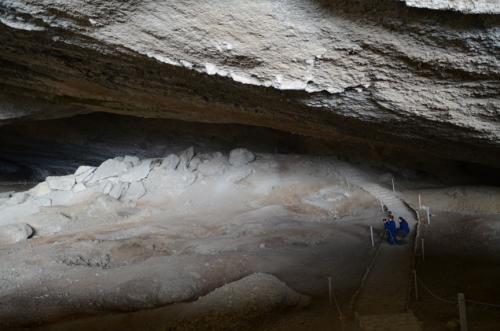 Cueva del Miladón (Miladon Cave) where fossils of a large sloth, called Miladón, were found. Luke and Anna on the right side as reference.
Cueva del Miladón (Miladon Cave) where fossils of a large sloth, called Miladón, were found. Luke and Anna on the right side as reference.
Our first stop of the day was at Mylodon Cave. The cave was a gaping opening in the side of a mountain, filled with dusty-brown rocks rather than elaborate stalactites. Although the area is arid now, it turns out that it was once covered by water. It was the waves in this sea that formed Mylodon Cave, with softer sediments washing away while more durable types of stone remained. These remaining layers form the walls of the cave and are known as conglomerates, which denotes a mixture of sediments and small stones.
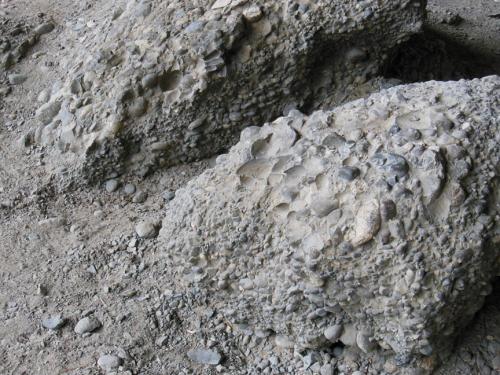 Conglomerate at Cueva del Miladón. Conglomerate are made of larger rocks, such as this pebbles, on a smaller grain matrix. This one was formed by glaciers.
Conglomerate at Cueva del Miladón. Conglomerate are made of larger rocks, such as this pebbles, on a smaller grain matrix. This one was formed by glaciers.
One of the most eye-catching formations in the park, of course, is the towers (torres). These are impressive columns of rock that jut abruptly out of the ground.
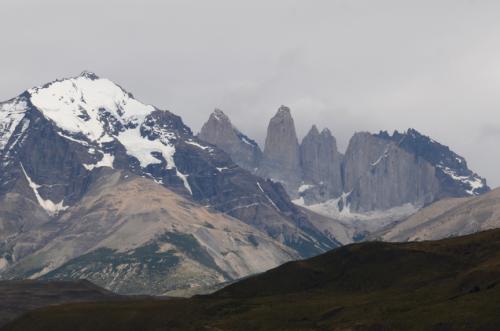 Beautiful Torres del Paine at the end of the summer.
Beautiful Torres del Paine at the end of the summer.
Although they reach very high altitudes now, they were actually formed underground as a result of a flow of magma. Thousands of years ago, magma solidified to form large formations of igneous rock underground. The reason we can see these structures today is plate tectonics. As the many tectonic plates in this area shifted against each other, these sections of igneous rock were pushed through to the surface.
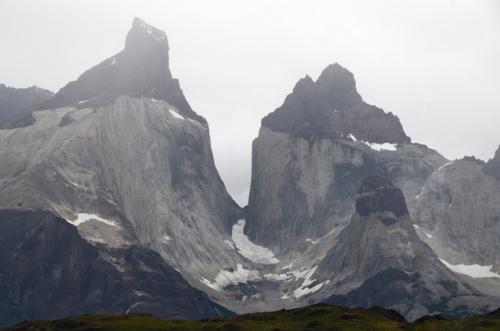 Magma that cools down under the ground produced this intrusive igneous rocks that were later pushed up by tectonic activity to form the characteristic jarred mountains at Torres del Paine.
Magma that cools down under the ground produced this intrusive igneous rocks that were later pushed up by tectonic activity to form the characteristic jarred mountains at Torres del Paine.
In many of the mountains at the park, noticeable stripes characterize the rock face. Generally, there are two ways in which stripes can form in rocks. One method begins with a small crack in an existing rock. Over time, other minerals seep into the crevice, leaving the rock with a different-colored band.
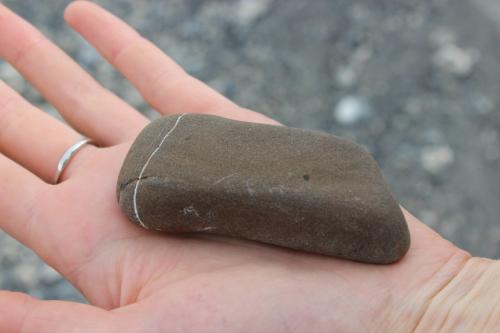 Small scale layering occurs when a crack in a rock is filled over time by minerals.
Small scale layering occurs when a crack in a rock is filled over time by minerals.
However, this typically occurs on a relatively small scale. In the case of the mountains at Torres del Paine, the variations in color were formed by an entirely different process. When this region was under water, rocks formed on the sea floor due to sediments that filtered down through the water. Over thousands of years, this built up layers upon layers of rock. However, the types of sediment contributing to these rocks varied. The materials being deposited could have changed based on the organisms living in the sea, the amount of run-off from land, or countless other environmental factors. This resulted in layers of rock that have distinct colors and textures. By the time the seas covering this area receded, this process had resulted in a distinct layering effect that is large enough for us to see.
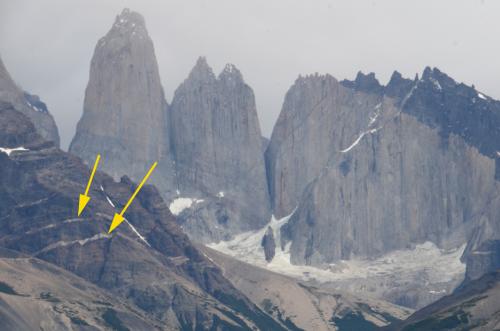 Large scale layers, shown by the yellow arrows, are seen at one of the mountains at Torres del Paine This is a sedimentary mountain produced by layers after layer of sediments when the mountain was ocean floor.
Large scale layers, shown by the yellow arrows, are seen at one of the mountains at Torres del Paine This is a sedimentary mountain produced by layers after layer of sediments when the mountain was ocean floor.
Interestingly, some of these layers seem to run at odd angles, not parallel to the ground. This, too, is due to plate tectonics. After the layered rocks had formed, movements of plates shifted the land, leaving many of these formations at different angles than the way they were formed. It's amazing that just a little information about plate tectonics can explain how many of these stunning geological features came to be.
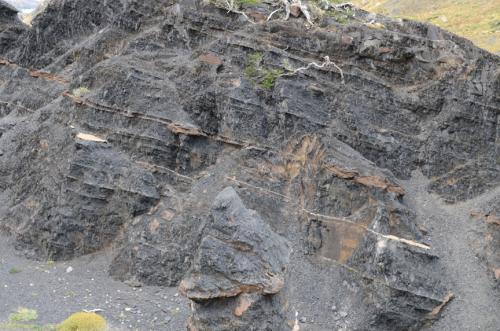 A closer look at an outcropping shows the small scale layers on the mountains produced by the accumulation of sediments over time.
A closer look at an outcropping shows the small scale layers on the mountains produced by the accumulation of sediments over time.

Comments